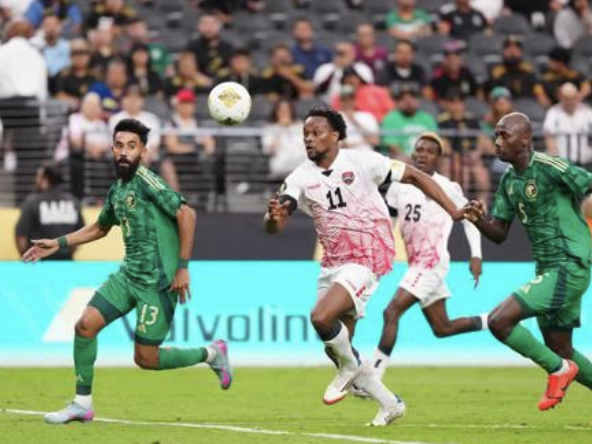July 4 – This Gold Cup was the first time that a Caribbean nation has not make it out of the group stage since 1996 when the competition had just nine national teams and went from three groups straight to a semi-final.
In every Gold Cup since then the Caribbean has always had a representative in the knock-out rounds and usually Jamaica, who were losing finalists in 2015 and 2017, or Haiti.
The performance in 2025 has propagated some discussion amongst FA presidents in the region that the Caribbean is now at its lowest competitive edge ever.
It is worth a harder look at the reality of the situation and whether the game in the Caribbean has been left behind.
Certainly this Gold Cup has seen a significant uplift in the quality of football and a resurgence of Central American nations, highlighted by the progress of Guatemala and Honduras to the semi-finals and the renewal of Costa Rica who exited the competition via a penalty shoot-out but without losing a game over 90 minutes.
The Caribbean nations were not able to fashion similar fairy tale stories, and their big hope Jamaica dramatically failed to ignite, losing to Guatemala in their first group game who they had beaten 3-0 a week previously in World Cup qualifying. Sometimes it just isn’t your day.
But while Jamaica disappointed there were some significant pointers that indicate it is not necessarily all doom and gloom.
In the opening game of the tournament Dominican Republic magnificently pushed Gold Cup holders Mexico to their limit, only losing by a goal and unfortunate not to come away with a draw.
Trinidad and Tobago, having struggled against the USA in their opener, were only the width of the cross bar away in their final group game against Saudi Arabia from making it into the quarter finals.
While Suriname pushed Mexico and Costa Rica on to the back foot with their athleticism and commitment. They could easily have come away with points against both of them.
Out of a field of 16 Gold Cup teams, Caribbean nations made up seven of them.
They earned their positions in the finals through qualification, not grace and favour.
The qualification process was based on the Nations League performances where Caribbean teams have made real progression through the three league tiers.
With the Nations League providing more meaningful matches than they have ever had before – many Caribbean nations only ever kicked a ball competitively in the four-year World Cup qualification cycle – the building blocks are there to develop and it is clear progress has been been made in terms of the volume of teams from the region that are now competitive.
Dismissing the Caribbean as a force might be premature.
There have only ever been three Caribbean nations who have ever qualified for a World Cup – Jamaica (1998), Trinidad and Tobago (2006) and Haiti (1974).
The next round of Concacaf 2026 World Cup qualifying will see six of the 12 nations in the three groups coming from the Caribbean. Group winners qualify automatically for 2026. The draw sees Group B only made up of Caribbean nations, guaranteeing there will be at least one Caribbean nation qualified for 2026. Another two Caribbean nations could make the intercontinental play-offs.
Reports of the death of Caribbean football might be over-exaggerated.
Contact the writer of this story at moc.l1751792513labto1751792513ofdlr1751792513owedi1751792513sni@n1751792513osloh1751792513cin.l1751792513uap1751792513
